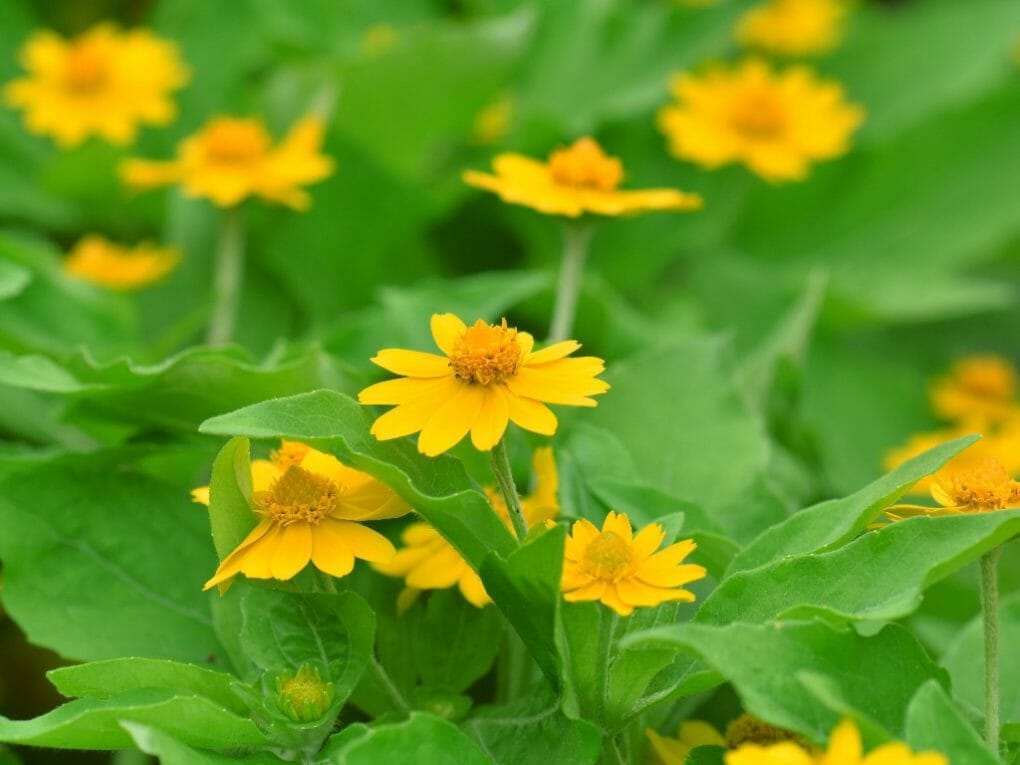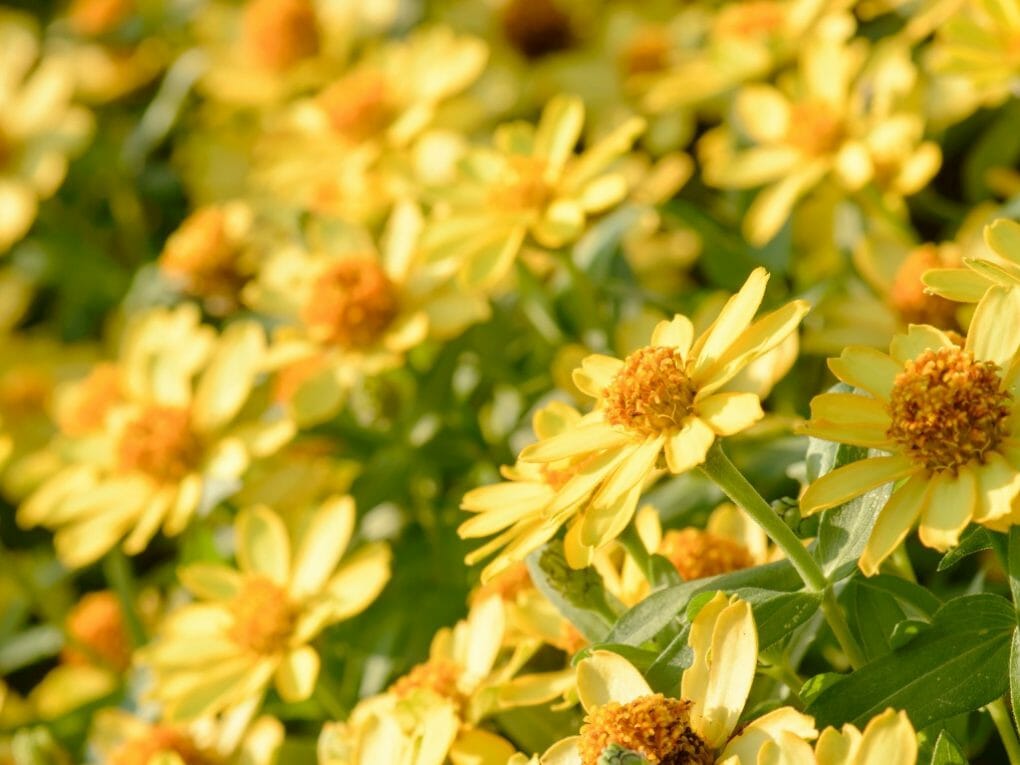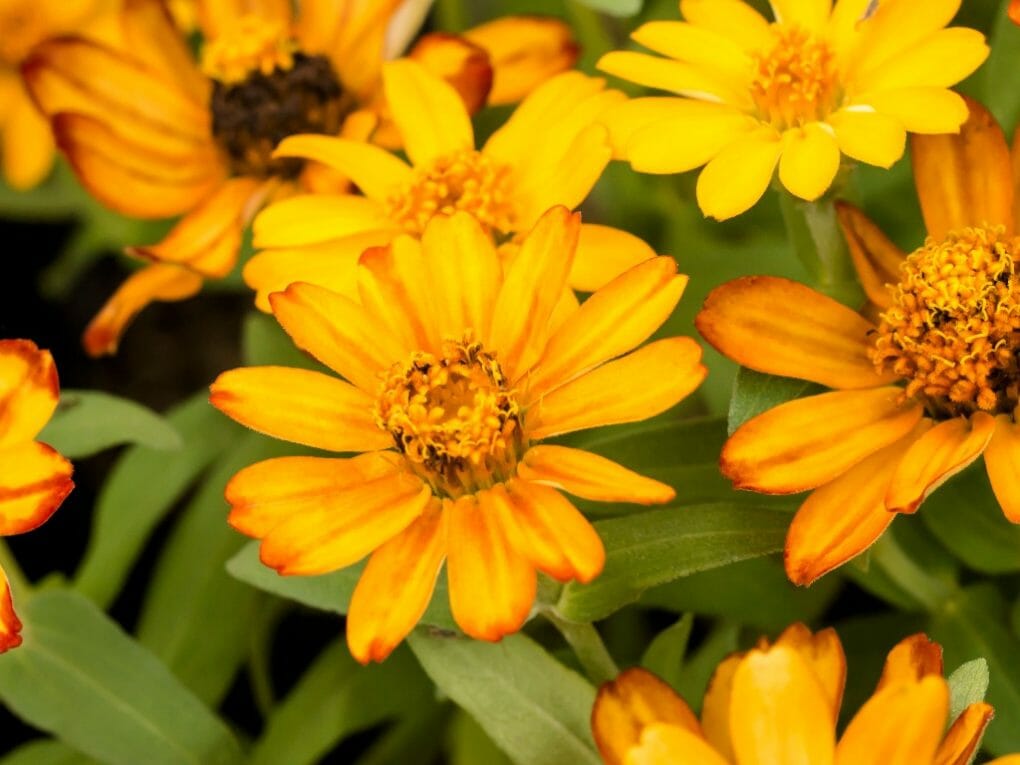How Long Does Zinnia Take To Grow? How Zinnia Grow

From seed to flower, it usually takes zinnias about two months, but this can change based on the weather. The taller varieties may take a bit longer. Zinnias have a rapid growth rate from when the seed is planted in the garden until it blooms, which can take anywhere from six to eight weeks.
Due to this, you must wait until the nighttime temperatures reach at least 50°F (10°C) before planting them outside. They are sensitive to frost. When the soil temperature is between 70-75°F (21-24°C), zinnia seeds will germinate in approximately one week.
Zinnia is a flower popular for its brightly colored flowers and long blooming periods. They’re also relatively easy to grow, making them a great option for beginner flower gardeners.Read more about how zinnia grows, how to plant zinnia from seeds, and care tips.
Table of Contents
How Zinnia Grow
Zinnias are known to sprout about 7 to 10 days after being planted. Depending on the plant type, they can be anywhere from 12 to 48 inches tall and 8 to 24 inches apart. If you want to know more about how your seeds will grow, like how tall they will get and how far apart they will be, you should always look at the seed packet. You can find this information on the back of every seed seeds packet. Once the plants are established, they will bring lots of good bugs to the garden because they will flower all summer. Zinnias are beautiful cut flowers used in many arrangements and bouquets. Once your Zinnias bloom, you can start cutting off the spent blooms to make room for new ones. Again, because Zinnias are annuals, they won’t come back the following year unless their seeds land on bare ground. If you want to save seeds for next year’s growing season, you should let the flower heads dry out. The easiest way to get seeds from your Zinnias is shown in the video below.
Growing Zinnias From Seeds
You may start zinnia plants, either indoors or outdoors, from seeds. Your best blooms have the greatest genetics and produce the best seeds, which is one of the most important things to know about seed preservation.
During the growing season, avid seed savers take the time to mark their favorite blooms and fruits, so they know which plants to choose for seed harvesting in the fall. Once the flowers have wilted, it is more difficult to determine which ones are the most eye-catching.
And even within the same plant, bloom quality might vary significantly.

This guide explains how to preserve zinnia seeds. If you have a zinnia with numerous blossoms, wrap a ribbon around your favorite branches to indicate when it is time to save seeds.
Remember that while some zinnias are cultivated from open-pollinated seeds that produce true-to-type plants generation after generation, most seeds sold in catalogs are F1 hybrids.
The seeds from hybrids will likely not produce true-to-type zinnia plants, but they will still produce beautiful blooms.
Additionally, certain seeds are protected by plant patents, so check the information on the seed packaging to determine what you have.
Indoor Planting
Before planting, it’s recommended that you obtain a rich and healthy potting mix in addition to starter pots. To avoid root shock when transplanting, peat pots are highly recommended. 6 to 8 weeks before the final frost, plant 1-2 seeds per container outdoors. You can plant Zinnia seeds on top of the soil and lightly cover them with peat moss. We advise using between 1/8″ and 1/16″ of peat moss for covering. To avoid washing away the seeds, you should use a spray bottle or a light mist setting to water them, as described above. After the last chance of frost has passed and the weather is warm, you can move the contents of your peat pots directly into the garden. Decomposition or breakdown of the peat pot is a well-known property of a peat container.
Outdoor Direct Seeding
If you plan to plant your Zinnia seeds outside, you should clear the area of any competing vegetation before planting. Rotate the soil or start with new soil that has been amended with organic matter. Plant the seeds on top of the dirt, then sprinkle a little coating of peat moss over them. Since it is more perilous to plant seeds outside, you should choose a day with low wind speeds on which to do so. You only need one or two seeds to start a plant from scratch. A 2-inch layer of mulch at the base of your Zinnia plants may be necessary once they reach their full height. Weeds and other invasive plants won’t be able to return to that spot as quickly.
Site Requirements for Growing Zinnia

- Most Zinnia flowers will do best in a spot with full sun for most of the day.
- The soil’s temperature range of 80-85°F (27-29°C) is excellent for germination. However, this only applies to rapid sprouting. Temperatures in the soil between 70-75°F (21-24°C) are optimal for germination and growth.
- You’ll also need to make sure that the soil or other medium you use to plant seeds is loose and drains well.
- We suggest you mix a light compost into any area of your garden where the soil is hard and compact to help it drain better.
- Places with hard, compact soil can get waterlogged, eventually killing your Zinnias or making their roots rot.
- Water the seeds and young seedlings daily with a spray bottle or a light mist until the sprouts are big enough to grow strong roots.
- As the plants get bigger, you can use a watering can or soaker setting to water them normally.
- Zinnias have a great potential for propagation through stem cuttings. The most important fact to remember about zinnias is that they can produce roots from their leaf nodes, the points on the stem from which new leaves emerge. When we pull back the plant’s stems to stimulate branching, we leave the nodes where they are. This is an important feature to keep in mind. You must ensure that your cut stem still has some nodes when taking cuttings.
- Zinnias are known as “cut and come again” flowers because their flowers may be clipped off without affecting the plant’s ability to produce more flowers. This indicates that you can squeeze and deadhead without affecting their ability to produce fruit.
- Zinnias may develop rather tall and top-heavy as they mature, which makes them susceptible to being blown over by the wind. Growers often support their plants with stakes or, if they are cultivating many flowers, they cover the entire bed with horticultural flower netting to prevent their plants from being eaten by animals. The netting performs a wonderful job of sustaining all of those hefty flowerheads, even though it is not invisible.
